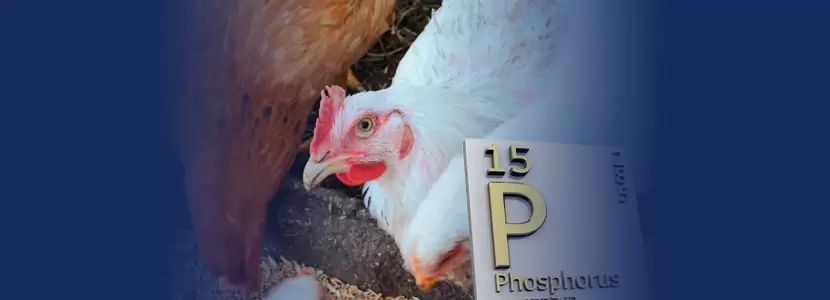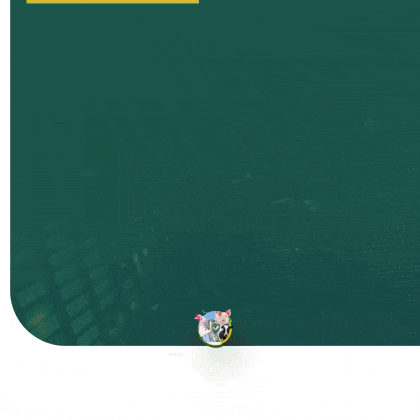Evaluation of Different Levels of Digestible Phosphorus in Layer Hens
Introduction
World population will exceed 9 billion people in the next 4 decades (Food and Agriculture Organization [FAO], 2014) with a concomitant 60% increase in food demand. (Kebreab, 2016).
Poultry farming is important in generating high-quality, low-cost food for humans, and particularly, chicken eggs play a significant role; hence, numerous studies are aimed at determining the mineral requirements, especially calcium and phosphorus, in laying hens. (Sanmiguel, 2016).
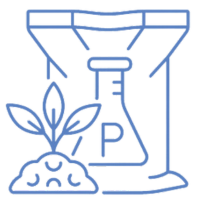 Phosphorus is the third most expensive component in a ration (Vallardi, 2002) and has environmental importance due to its excretion by birds. (Keshavarz, 2004).
Phosphorus is the third most expensive component in a ration (Vallardi, 2002) and has environmental importance due to its excretion by birds. (Keshavarz, 2004).
Valdés 2011 in his work mentions that genetic selection has changed the characteristics of laying hens, which are more productive, with lower maintenance requirements, but also with low feed intake, so they consider that the calcium and phosphorus requirements need to be constantly reevaluated.
It is also worth noting that in Mexico and other egg producing countries, we still use available and non-digestible phosphorus values, this is due to various factors, the first being that recommendations in the literature still use available phosphorus from NRC Tables and second, we do not have information on the digestible phosphorus values in the ingredients we are using, however, the concept of digestible phosphorus is beginning to appear in literature such as the Brazilian tables (Rostagno 2017), in the Hy-Line W80 2017 manual, and the nutritional needs in poultry farming FEDNA (Spanish Foundation for the Development of Animal Nutrition) Standards (2018).
The available phosphorus requirements for laying hens have been evaluated; however, studies to work with digestible phosphorus are scarce.
Pre-cecal digestibility (PC) is an established criterion for measuring the quality of certain nutrients in birds. Therefore, this criterion begins to take relevance since the values are not affected by post-ileal microbial activity, in addition to eliminating the effect of contamination by urinary excretion. This is an advantage since urinary excretion is one of the most important regulators in P metabolism. This criterion can be developed as an alternative tool for measuring P availability, as one of its advantages is its lower sensitivity to variation in dietary P, compared to other approaches.
To implement adequate Ca and P rations, it is necessary to know the digestibility of these minerals from the ingredients we use and that the bird requirements are expressed in the same terms. (Gómez 2013).
Avoiding deficiencies is the main objective of optimizing the P concentration in feed, but other aspects are becoming increasingly relevant. On one hand, P accumulates in the soil and leaches if that concentration becomes too high, with negative consequences on surface waters, such as eutrophication. On the other hand, it is necessary to consider that global gross phosphate resources, which are essential for the production of feed P, are limited. (Rodehutscord, 2011).
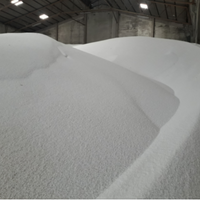 Most phosphates are derived from phosphate rock, which is a non-renewable resource, and current reserves could become scarce in 50 – 100 years. Maintaining P resources in the face of scarcity has been identified as one of the greatest challenges of sustainable food production. (Gómez 2013).
Most phosphates are derived from phosphate rock, which is a non-renewable resource, and current reserves could become scarce in 50 – 100 years. Maintaining P resources in the face of scarcity has been identified as one of the greatest challenges of sustainable food production. (Gómez 2013).

Given this background, the objective of this study was to evaluate the productive response of Hy-Line W 80 laying hens fed with different levels of digestible phosphorus and fixed levels of total calcium.
Materials and Methods
The study was conducted at the Center for Applied Research in Poultry Nutrition (CIANA), which is a commercial-type experimental farm, located in the state of Jalisco, Mexico.
- 800 Hy-Line W-80 hens at 36 weeks of age, with an average weight of 1,582 ± 85.7 g, were housed in California-style cages in a pyramidal form of 3 levels, with each cage capable of accommodating 5 birds, providing a space of 400cm2/bird, with a trough feeder (10 cm/bird) and nipple drinker.
- The hens were distributed in a completely randomized design into 5 treatments with 8 replicates of 20 hens each.
- All animals were provided with water and feed ad libitum.
- Phase 1 diets (from 38 to 50 weeks of age) were formulated based on white maize, soybean meal, and canola meal according to the nutritional profiles calculated based on egg mass production and a feed intake of 108 g/bird/day.
The treatments were:
- Diet with 0.254% digestible phosphorus (DP) and 4.1% total calcium (TC)
- Diet with 0.292% DP and 4.1% TC
- Diet with 0.328% DP and 4.1% TC
- Diet with 0.365% DP and 4.1% TC
- Diet with 0.402% DP and 4.1% TC
During the 12-week experimentation period, weekly productive parameters were recorded, and the following variables were determined: laying percentage, average egg weight (g), feed intake per bird per day (g), percentage of broken eggs, dirty eggs, number and kg of eggs accumulated per housed hen. Egg mass per bird per day (g), weekly and cumulative feed conversion ratio (kg:kg). Weekly and cumulative mortality.
At the beginning, middle, and end of the trial, 10 hens from each treatment were weighed to calculate weight gain.
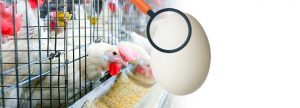
Egg quality was evaluated at the middle and end of the trial using a DET 6000 texturometer from Nabel, with 6 eggs per replicate.
At the end of the trial, 2 hens per treatment were sacrificed to obtain tibias, both were cleaned of muscle tissue and refrigerated at 4°C for subsequent shipment to the laboratory.
Excreta were collected over a period of 12 hours, collection trays were placed under 4 replicates per treatment, and a 150 g sample was taken from each replicate. They were then refrigerated at 4°C for shipment to the laboratory. Ash, minerals, and moisture determinations were performed in the animal systems laboratory.
Statistical Analysis was performed using a completely randomized design, and mean comparisons were made using Tukey’s test with P<0.05. Additionally, a simple linear regression was performed where X was the levels of digestible phosphorus included in the diet, and Y = response variable.
Table 1. Diets used in the treatments, the level of digestible phosphorus was obtained from FEDNA tables.
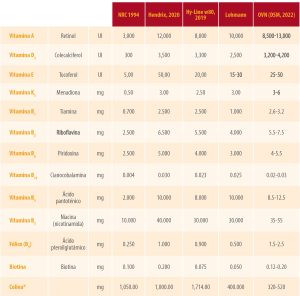
Results and Discussion
- In the results obtained during the 12 weeks of experimentation from week 38 to 50 of the hens’ life, on weekly and cumulative productive parameters it is observed that laying percentage, egg weight, feed intake per bird per day, percentage of broken and dirty eggs, were not affected by different levels of digestible phosphorus and fixed levels of total calcium (P>0.05).
- The number and kilograms of accumulated eggs were similar in the 5 treatments (P>0.05) perhaps because despite the different levels of digestible phosphorus and fixed levels of total calcium in the formulas, the hens meet their phosphorus and calcium needs including the lowest level of digestible phosphorus used in the study (0.254%).
Since there is no information on productive performance based on digestible phosphorus, the equivalence in available phosphorus was taken. These results agree with those found by Acosta A, (2009) who mentions that the percentage of available phosphorus in the diet can be reduced to 0.25%, without observing an adverse effect on production.
With the equivalence in digestible phosphorus of 0.254%, a similar productive performance was obtained as with the maximum value studied (0.402% digestible phosphorus). This suggests that the current recommended digestible phosphorus level of 0.36% by the Hy-Line W80 manual for laying hens aged 35 to 55 weeks could be reduced to values close to 0.25%, without altering productive indicators. This can be attributed to the greater capacity of laying hens to utilize phosphorus.
- Results of the percentage of broken eggs, which did not differ between the treatments used (P>0.05), similar results were obtained when measuring shell strength, where the values at the middle of the trial were between 5078.75 and 5462.70 g/cm2, and for the values at the end of the trial 5014.70 and 5440.40 g/cm2.
These values were above those mentioned for the age of Hy-Line W80 hens 2019. This is because when mineral availability such as calcium, phosphorus is efficient, they make deposition in the protein matrix adequate to form a strong shell and therefore the shell breaking force is higher. Contrary to what M. Skřivan (2010) mentions where both high levels of available phosphorus (0.41%) and low levels (0.2%) tend to decrease shell quality, which was not observed in this experiment.
- In the internal egg quality, no differences were found between the Haugh units of the different treatments (p>0.05).
- The results of the excreta analysis (percentage of moisture, Ca, and P) of hens fed with different levels of digestible phosphorus and fixed levels of total calcium showed no difference (p>0.05), indicating that the levels of digestible phosphorus did not influence the total phosphorus excreted, additionally considering that the reduction of phosphorus excretion is important for lower environmental contamination.
- The results of the analysis of ash content, phosphorus, and calcium in the tibias of hens fed with different levels of digestible phosphorus did not show differences between the treatments (p>0.05). Keshavarz (2000), Gordon and Roland (1997), and Sohail and Roland (2000) reported similar results to those obtained in the present study regarding the percentage of ash in bones with low-phosphorus diets.
The phosphorus content in the bone was not affected by the level of digestible phosphorus in the diet. In the same context, the amount of calcium also showed no change (p>0.05).
Conclusions
From the results obtained under the experimental conditions used, it can be concluded that a concentration of digestible phosphorus ranging from 0.254% to 0.402%, with a total calcium concentration of 4.1% in the feed, in diets for Hy-Line W80 hens aged 38 to 50 weeks, is suitable for maintaining the performance of laying hens without affecting their calcium and phosphorus reserves in bone marrow and without compromising egg quality. Therefore, there would be an economic advantage in using a diet with low concentrations of digestible phosphorus over higher concentrations.
Results tables and references available upon request
